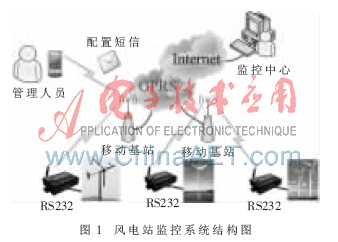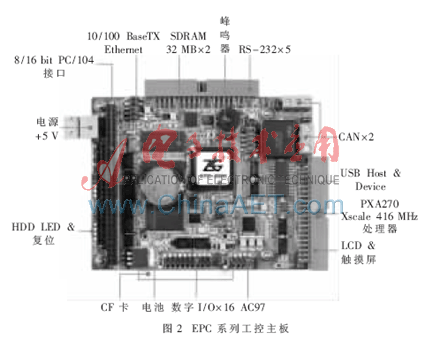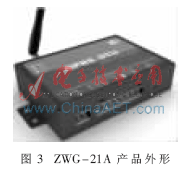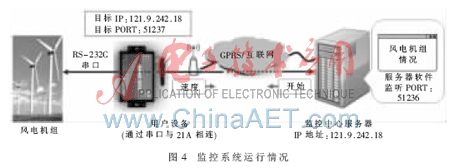1 Current situation and demand analysis
With the gradual depletion of traditional petrochemical energy and the rise of the low-carbon economy, humans are paying more and more attention to the use of renewable energy such as wind energy, and wind power generation technology has gradually developed.
At present, the distribution of wind turbines is relatively scattered, and there are many monitoring parameters. However, areas with rich wind energy resources are generally remote and have incomplete infrastructure, which poses new challenges to the monitoring of wind turbines.
In order to fully and effectively utilize wind power for power generation, correctly grasp the system operation status, quickly diagnose system faults, and improve the reliability, safety and economic benefits of wind power station operation, this article introduces a wind power remote monitoring system based on GPRS communication technology. GPRS communication technology also has the advantages of convenient networking, low construction and maintenance costs, reliable and fast communication, and is an ideal communication solution for this monitoring system.
2 System composition
The structure of the wind power remote monitoring system is shown in Figure 1, which mainly consists of three parts: field monitoring, data transmission, and monitoring center. The field monitoring part is installed in the control cabinet of each wind turbine tower. The field monitoring of each wind turbine can monitor the operating status of the wind turbine and perform preliminary processing on the sampled data; the data transmission part sends the field sampled data to the remote monitoring center server; the monitoring center part is a remote monitoring server distributed in different locations according to actual needs. The center is currently generally connected to the Internet through optical fiber or ADSL dial-up and other communication methods.

2.1 On-site monitoring
The on-site monitoring part consists of the EPC industrial control mainboard and the wind power station monitoring module. The wind power station monitoring module consists of three major parts: the main control system, the pitch control system, and the inverter system.
The EPC series industrial control motherboard is an ARM processor-based industrial control computer motherboard developed by Guangzhou Zhiyuan Electronics Co., Ltd., pre-installed with genuine Microsoft Windows CE 5.0, Monta Vista Realtime Linux or VxWorks operating system. As shown in Figure 2, the EPC series industrial control motherboard has 2 CAN bus controllers, 1 10/100 M adaptive Ethernet adapter, 3 RS-232 serial ports, 2 RS-485 interfaces, supports TFT/STN LCD display, and has VGA display interface and LVDS LCD interface. The EPC series industrial control computer motherboard can work stably in a wide temperature range of -40 ℃ ~ +85 ℃, meeting various application requirements of industrial-grade products.

With the help of the powerful functions of the EPC series industrial control motherboard, the wind power station monitoring module realizes the collection and control of various parameters of the unit: power grid parameters, meteorological parameters, unit status parameters, pitch control, generator operation control and management, etc.
2.2 Data transmission part
According to the current actual situation, the wireless GPRS method is selected for the data transmission part.
General Packet Radio Service (GPRS) is a wireless packet switching technology based on the GSM system, providing end-to-end, wide-area wireless IP connection. Simply put, GPRS is a high-speed data processing technology that transmits data in the form of "packets". GPRS is a technology developed on the basis of GSM, and is a technology between the second-generation digital communication and the third-generation packet-based mobile service, so it is usually called 2.5G. When using GPRS transmission, data is first transmitted to the mobile company's router through the mobile company's GPRS network, and then routed to the monitoring center server connected to the Internet.
GPRS has the advantages of fast transmission speed (its theoretical transmission rate is 171.2 kb/s), always online, and billing by traffic. For high-speed data applications, it is also easy to upgrade to a 3G-based data transmission method, making it an ideal data transmission method.
The GPRS communication module used in this monitoring system is the ZWG-21A wireless data transmission device produced by Guangzhou Zhiyuan Electronics Co., Ltd., and its appearance is shown in Figure 3.

The device provides a fully transparent serial data channel, allowing your device to easily achieve wireless connection with the Internet, and can easily achieve remote, wireless, and networked communication. It can work stably within the industrial temperature range (-15 ℃ ~ +60 ℃), and can be used in various industries such as industrial control, field communication, remote monitoring, intelligent instruments, power systems, traffic management, meteorological detection, water treatment, environmental monitoring, financial securities, coal mining, and petroleum.
The features of ZWG-21A are as follows:
Large buffer design (1 462×70 B for both sending and receiving), using dynamic partitioning technology to improve the efficiency of buffer use; can cache up to 3 100 frames of data (64 B per frame), suitable for fast and continuous transmission of small data frames; each frame can be set to a maximum of 1 460 B (140 frames cached), suitable for continuous transmission of large amounts of data; uses industrial-grade GPRS module with built-in reliable protocol stack; data is fully transparently transmitted, and users do not need to understand complex TCP/IP, PPP and other protocols; supports data center dynamic domain name or IP address access; supports backup data center; supports APN virtual private network services; supports data center virtual serial port function, seamlessly connects to existing host computer software; supports automatic reconnection function after disconnection; has connection timing control function to save traffic; supports local and remote graphical interface configuration and maintenance; supports short message configuration and maintenance; supports serial port configuration and USB interface configuration; supports local and remote firmware upgrades; multiple software and hardware reliable design, composite watchdog technology, to ensure safe operation of the equipment.
ZWG-21A communicates with the EPC series industrial control mainboard via RS-232C. ZWG-21A transmits various parameters of wind turbine operation collected by the EPC series industrial control mainboard to the remote monitoring center, and transmits various instructions issued by the monitoring center to the EPC industrial control mainboard to complete the control of the wind turbine.
2.3 Remote Monitoring Center
(1) Access method
The function of the remote monitoring center is to receive the operating data of each wind power station, monitor its operating status, and save its operating data. The remote monitoring center must be connected to the Internet network to communicate.
The following options are available for remote monitoring center access:
Solution 1: ADSL dial-up Internet access. ADSL technology uses a pair of existing telephone copper wires to provide users with asymmetric transmission rates for upstream and downstream. The speed of ADSL access technology can reach 1 Mb/s upstream/8 Mb/s downstream, which is very fast.
Solution 2: Fiber optic connection to the Internet. Fiber optic access can ensure that users are provided with high-speed bandwidth of 10 Mb/s to 1,000 Mb/s, and can be directly connected to the CHINANET backbone node. It is mainly suitable for commercial group users and intelligent community LANs.
(2) Software Functions
The remote monitoring center should support common OPC communication methods and dynamic library DLL communication methods.
The remote monitoring center should be able to process and display the following parameters: meteorological parameters, unit operating data, unit status parameters, power grid parameters, power grid faults, faults occurring during the operation of each unit, etc.
The remote monitoring management center should be able to conduct technical analysis and provide targeted reports to different users such as management, technical departments, and maintenance departments to facilitate management.
(3) Equipment configuration
After the monitoring center starts running, it can accept connections from ZWG-21A. First, use the "DTU Configuration Tool" to modify the default configuration of ZWG-21A, set the domain name or IP address of the data center master station to the domain name or IP address of the monitoring center, set the port number of the data center master station to the port number monitored by the monitoring center, and select the connection mode as "Establish TCP connection". After the settings are completed, ZWG-21A can actively connect to the monitoring center and establish a TCP connection. Figure 4 is a possible situation of the monitoring system operation. Please note the corresponding relationship between the target IP address and target PORT and the server software in the figure.

Wind power technology is a green, pollution-free, renewable energy source. The development of wind power technology is a fundamental solution to the current problems of severe pollution, frequent extreme weather, etc. This paper makes some useful discussions on the monitoring level of wind power technology.
Previous article:PROFIBUS bus introduction and network
Next article:Application of Intelligent RFID System in Industrial Control
Recommended ReadingLatest update time:2024-11-16 19:49
- Popular Resources
- Popular amplifiers
- Molex leverages SAP solutions to drive smart supply chain collaboration
- Pickering Launches New Future-Proof PXIe Single-Slot Controller for High-Performance Test and Measurement Applications
- CGD and Qorvo to jointly revolutionize motor control solutions
- Advanced gameplay, Harting takes your PCB board connection to a new level!
- Nidec Intelligent Motion is the first to launch an electric clutch ECU for two-wheeled vehicles
- Bosch and Tsinghua University renew cooperation agreement on artificial intelligence research to jointly promote the development of artificial intelligence in the industrial field
- GigaDevice unveils new MCU products, deeply unlocking industrial application scenarios with diversified products and solutions
- Advantech: Investing in Edge AI Innovation to Drive an Intelligent Future
- CGD and QORVO will revolutionize motor control solutions
- Innolux's intelligent steer-by-wire solution makes cars smarter and safer
- 8051 MCU - Parity Check
- How to efficiently balance the sensitivity of tactile sensing interfaces
- What should I do if the servo motor shakes? What causes the servo motor to shake quickly?
- 【Brushless Motor】Analysis of three-phase BLDC motor and sharing of two popular development boards
- Midea Industrial Technology's subsidiaries Clou Electronics and Hekang New Energy jointly appeared at the Munich Battery Energy Storage Exhibition and Solar Energy Exhibition
- Guoxin Sichen | Application of ferroelectric memory PB85RS2MC in power battery management, with a capacity of 2M
- Analysis of common faults of frequency converter
- In a head-on competition with Qualcomm, what kind of cockpit products has Intel come up with?
- Dalian Rongke's all-vanadium liquid flow battery energy storage equipment industrialization project has entered the sprint stage before production
- Allegro MicroSystems Introduces Advanced Magnetic and Inductive Position Sensing Solutions at Electronica 2024
- Car key in the left hand, liveness detection radar in the right hand, UWB is imperative for cars!
- After a decade of rapid development, domestic CIS has entered the market
- Aegis Dagger Battery + Thor EM-i Super Hybrid, Geely New Energy has thrown out two "king bombs"
- A brief discussion on functional safety - fault, error, and failure
- In the smart car 2.0 cycle, these core industry chains are facing major opportunities!
- The United States and Japan are developing new batteries. CATL faces challenges? How should China's new energy battery industry respond?
- Murata launches high-precision 6-axis inertial sensor for automobiles
- Ford patents pre-charge alarm to help save costs and respond to emergencies
- New real-time microcontroller system from Texas Instruments enables smarter processing in automotive and industrial applications
- Six Tips for Selecting PCB Components
- TMS320C665x program loading and burning based on emulator
- Three elements of switching power supplies and digital devices
- Online ESP32 Simulator
- 31 "Millions of Miles" Raspberry Pi Car——Ubuntu MATE System Installation
- ABB six-axis robot and Siemens 1500PLC user manual
- [Ateli Development Board AT32F421 Review] 7. Kuga registers jointly light up OLED
- Design and FPGA implementation of digital on-screen display control core.pdf
- EL817C Optocoupler Transmission Ratio Problem
- Keysight Technologies N9020A 3.6G spectrum analyzer special sale: 8500/unit

 Introduction to Internet of Things Engineering 2nd Edition (Gongyi Wu)
Introduction to Internet of Things Engineering 2nd Edition (Gongyi Wu)
















 京公网安备 11010802033920号
京公网安备 11010802033920号